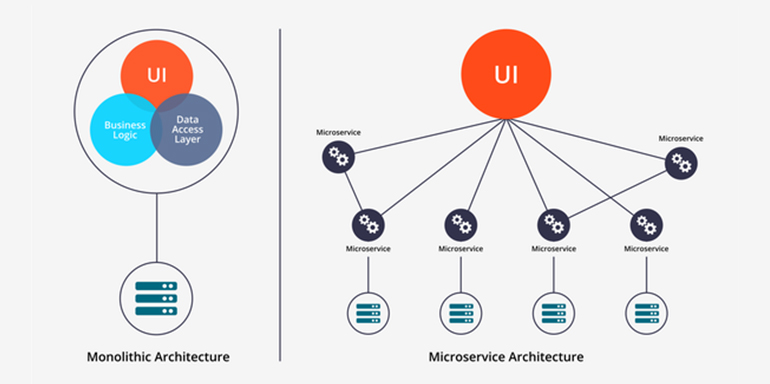In the world of software development, the architecture of an application plays a crucial role in its success. One popular architectural pattern that has gained momentum in recent years is the microservices architecture. This architecture pattern involves splitting up an application into smaller, independent services that can be developed, deployed, and scaled independently. In this blog post, we will explore the benefits and challenges of implementing a microservices architecture in your application.
Benefits of Microservices Architecture
- 1. Scalability: One of the key benefits of microservices architecture is the ability to scale individual services independently. This means that you can scale up the services that are experiencing high traffic while keeping the other services running at their regular capacity. This helps to ensure that your application remains performant, even under heavy load.
- 2. Flexibility: Another benefit of microservices architecture is the flexibility it provides. Each service can be developed using different technologies, programming languages, and frameworks, as long as they can communicate with each other through a standardized protocol. This allows you to choose the best tools for the job, rather than being limited to a single technology stack.
- 3. Resilience: In a microservices architecture, if one service fails, it does not bring down the entire application. Since each service is independent, failure in one service does not affect the functioning of other services. This makes the application more resilient and less prone to downtime.
- 4. Faster Development: Microservices architecture allows for faster development cycles. Since each service is developed and deployed independently, it can be released to production as soon as it is ready, without having to wait for the entire application to be developed.
Challenges of Microservices Architecture
- 1. Complexity: While microservices architecture provides flexibility and scalability, it also introduces complexity. With multiple services running independently, it can be challenging to ensure that they all work together seamlessly. Additionally, monitoring and debugging can be more difficult in a microservices architecture.
- 2. Testing: Testing can be a challenge in a microservices architecture. Since each service is developed independently, it can be challenging to ensure that all the services work together as expected. This requires a comprehensive testing strategy that includes both unit testing and integration testing.
- 3. Infrastructure: Microservices architecture requires a robust infrastructure to ensure that all services are deployed and running smoothly. This can be challenging to set up and maintain, especially for small businesses with limited resources.
Conclusion
While microservices architecture offers numerous benefits, it also introduces challenges that must be carefully considered. By taking a strategic approach to implementing a microservices architecture and addressing the challenges upfront, you can take advantage of the flexibility, scalability, and resilience of this architecture pattern to build robust and performant applications.
Let's get Technical,
Example Code Snippet:
Here is an example of a microservice written in Node.js using the Express.js framework:
const express = require('express');
const app = express();
app.get('/users', (req, res) => {
res.send('List of users');
});
app.post('/users', (req, res) => {
res.send('User created');
});
app.listen(3000, () => {
console.log('Listening on port 3000');
});
This microservice provides two endpoints, one for listing users and one for creating users. This service can be deployed independently and scaled as needed to handle high traffic.
The advantages of this microservice with two endpoints are that it can be deployed and scaled independently to handle high traffic, making it more flexible and adaptable to changing demands. Additionally, separating the functionality into smaller, more specialized services can lead to improved maintainability and scalability. For example, if the user creation endpoint experiences a sudden increase in traffic, the service can be scaled up without affecting the user listing endpoint or the rest of the system. This improves overall system stability and reliability.
